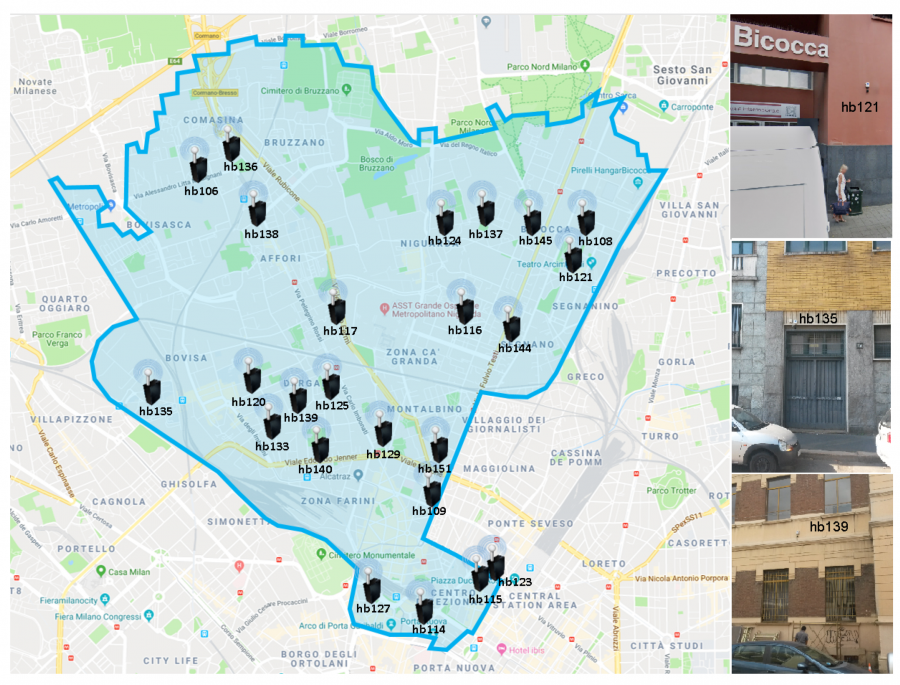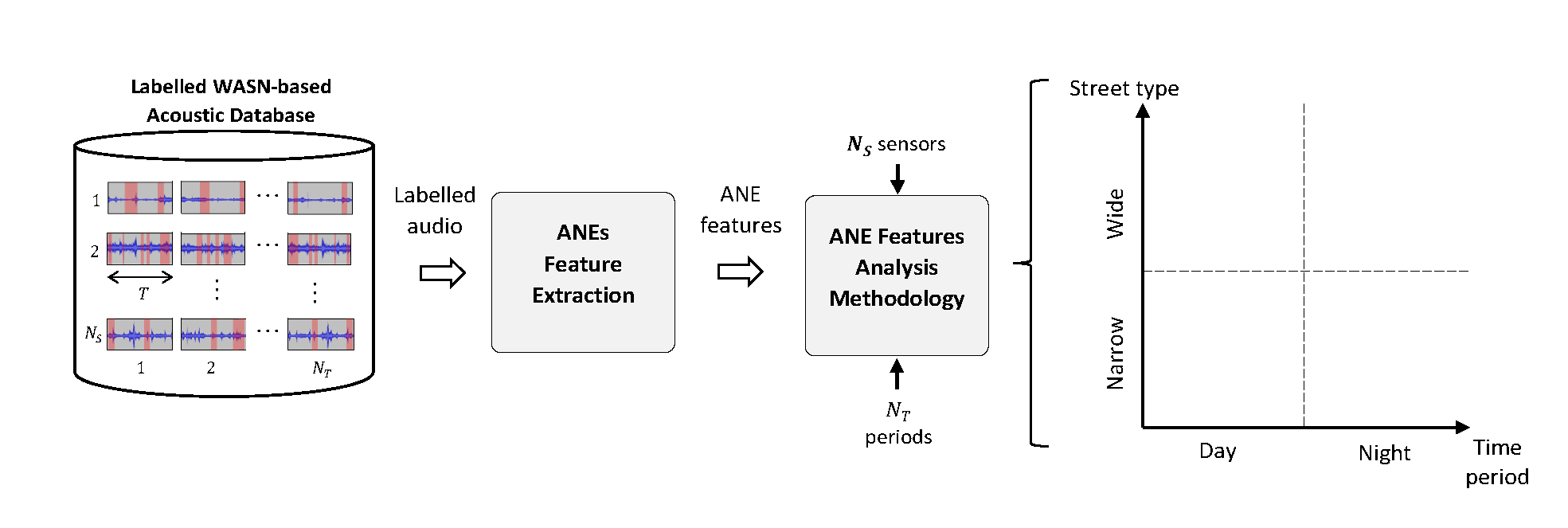WASN-Based Day–Night Characterization of Urban Anomalous Noise Events in Narrow and Wide Streets

Nowadays, 55% of people is living in urban areas, a percentage that is expected to grow to around 70% by 2050 according to the United Nations (UN). Urban areas should develop sustainably to guarantee the quality of life of their inhabitants. In addition to air pollution, environmental noise, which is increasing year after year, has become one of the major hazards in populated areas according to the World Health Organization (WHO). Within the urban areas, Road Traffic Noise (RTN) has become the main noise source. Recently, low-cost Wireless Acoustic Sensor Networks (WASNs) have started becoming an alternative to traditional strategic noise mapping in cities to address the requirements of the European Noise Directive (END). In order to monitor RTN solely through WASN-based approaches, the off-line removal of those events unrelated to regular road traffic (e.g., sirens, airplanes, trams, etc.) should be done automatically. Within the LIFE DYNAMAP project we have addressed this goal by means of the design and development of an Anomalous Noise Event Detector (ANED) trained by means of a preliminary expert-based dataset collected in both project pilot areas: the District 9 of Milan as urban area, and the A90 highway surrounding Rome as a suburban area. From that dataset of 9h of labelled acoustic data, we could observe 15 urban Anomalous Noise Events (ANEs), analyzing their impact on the computation of the A-weighted RTN equivalent levels. After the deployment of both urban and suburban WASNs, we collected more than 300h of acoustic data through the networks in real operation conditions.

After an initial analysis of the individual and aggregate impact of ANEs in the computation of the equivalent noise levels in bot urban and suburban environments presented here, researchers from the signal processing area of the GTM, Prof. Francesc Alías, Dr. Joan Claudi Socoró and Dr. Rosa Ma Alsina-Pagès have continued characterizing the presence of ANEs for WASN-based noise monitoring. The study has been conducted on 151h of WASN-based labeled acoustic data collected through the 24 nodes of the DYNAMAP’s urban network, analyzing the temporal and local characteristics of urban ANEs in real acoustic environments during diurnal and nocturnal periods, considering their particularities found in narrow and wide streets.
Besides confirming the unbalanced nature of the problem (RTN is the main source) as already observed in the expert-based dataset, the study has identified 26 ANE subcategories (11 more than in the previous work), which are mainly derived from the presence of pedestrians, animals, transports and industry. The study also shows that the occurrence of ANEs depends more significantly on the time period (day-night) than on the street type (narrow-wide), despite they have been especially found in narrow streets. Moreover, several particularities regarding their individual characteristics (i.e., median durations and signal-to-nose ratios) have been also found to be related with the period of time and/or location (e.g. ANEs usually present higher median signal-to-noise ratios at night).
More details can be found in the following Open Access paper:
Francesc Alías, Joan Claudi Socoró, Rosa Ma. Alsina-Pagès (2020); "WASN-Based Day–Night Characterization of Urban Anomalous Noise Events in Narrow and Wide Streets", Sensors (Special Issue "Selected Papers from the 6th International Electronic Conference on Sensors and Applications”) (MDPI), 20(17),4760, https://doi.org/10.3390/s20174760
with Abstract:
In addition to air pollution, environmental noise has become one of the major hazards for citizens, being Road Traffic Noise (RTN) as its main source in urban areas. Recently, low-cost Wireless Acoustic Sensor Networks (WASNs) have become an alternative to traditional strategic noise mapping in cities. In order to monitor RTN solely, WASN-based approaches should automatize the off-line removal of those events unrelated to regular road traffic (e.g., sirens, airplanes, trams, etc.). Within the LIFE DYNAMAP project, 15 urban Anomalous Noise Events (ANEs) were described through an expert-based recording campaign. However, that work only focused on the overall analysis of the events gathered during non-sequential diurnal periods. As a step forward to characterize the temporal and local particularities of urban ANEs in real acoustic environments, this work analyses their distribution between day (06:00–22:00) and night (22:00–06:00) in narrow (1 lane) and wide (more than 1 lane) streets. The study is developed on a manually-labelled 151-h acoustic database obtained from the 24-nodes WASN deployed across DYNAMAP’s Milan pilot area during a weekday and a weekend day. Results confirm the unbalanced nature of the problem (RTN represents 83.5% of the data), while identifying 26 ANE subcategories mainly derived from pedestrians, animals, transports and industry. Their presence depends more significantly on the time period than on the street type, as most events have been observed in the day-time during the weekday, despite being especially present in narrow streets. Moreover, although ANEs show quite similar median durations regardless of time and location in general terms, they usually present higher median signal-to-noise ratios at night, mainly on the weekend, which becomes especially relevant for the WASN-based computation of equivalent RTN levels.
Funding
The investigation presented in this work has been partially supported by the LIFE DYNAMAP project (ref. LIFE13 ENV/IT/001254). The research that has led to these results has also been funded by the Secretaria d’Universitats i Recerca del Departament d’Empresa i Coneixement from the Generalitat de Catalunya and the Ramon Llull University (ref. 2020.URL-Proj-053).
Acknowledgments
The authors would like to thank Marc Hermosilla, Ester Vidaña and Ferran Orga for their support in the audio labelling. The authors would like to thank our partner BlueWave in the DYNAMAP project for the support in the recording and uploading of the audio files through the sensors of the urban WASN in Milan.